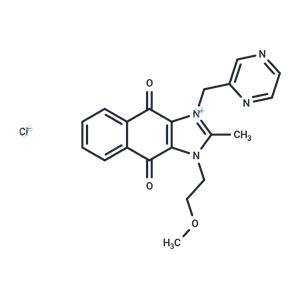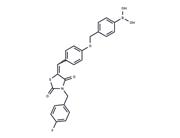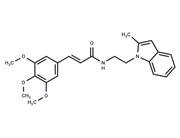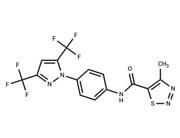| In vitro | Sepantronium bromide (YM155; 30 μM) does not affect survivin gene promoter-driven luciferase reporter activity but significantly suppresses endogenous survivin expression in PC-3 and PPC-1 human HRPC cells with deficient p53 by transcriptionally inhibiting the survivin gene promoter. At 100 nM, it does not impact the protein expression of c-IAP2, XIAP, Bcl-2, Bcl-xL, Bad, α-actin, and β-tubulin. Sepantronium bromide exhibits potent inhibition against various human cancer cell lines, including those with mutated or truncated p53 (e.g., PC-3, PPC-1, DU145, TSU-Pr1, 22Rv1, SK-MEL-5, and A375), with IC50 values ranging from 2.3 to 11 nM. It also increases the sensitivity of NSCLC cells to γ-radiation, enhances apoptotic cell numbers and caspase-3 activity, and delays the repair of radiation-induced double-strand breaks in nuclear DNA. |
| In vivo | Sepantronium bromide (YM155) effectively inhibits tumor growth in PC-3 xenografts at doses of 3 and 10 mg/kg without causing significant loss in body weight or reduction in blood cell count. It preferentially accumulates in tumor tissues in vivo and achieves an 80% Tumor Growth Inhibition (TGI) at a 5 mg/kg dosage in PC-3 orthotopic xenografts [1]. Additionally, when combined with γ-radiation, YM155 exhibits potent antitumor efficacy against H460 and Calu6 xenografts in nude mice [2]. In models of orthotopic renal and metastatic lung tumors, the combination of YM-155 (Sepantronium bromide) and IL-2 synergistically reduces tumor weight, lung metastases, and the visibility of luciferin-stained tumors [3]. |

 United States
United States






